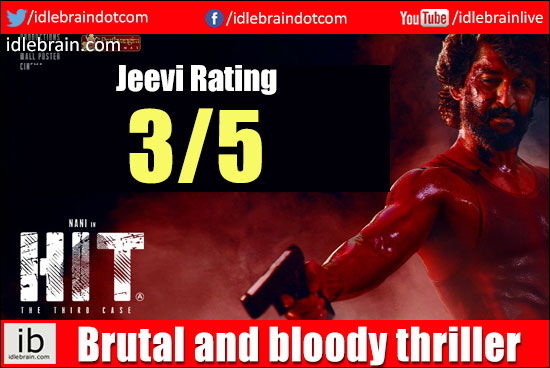|
|
Story
Arjun Sarkar (Nani) is a short-tempered police officer grappling with a midlife crisis. Despite wanting to settle down, he struggles to find a suitable match. Recently transferred from Jammu and Kashmir to Vizag, he’s also facing a disciplinary trial for a past incident involving excessive force. Amidst this turmoil, a series of murders come to light - all executed with the same chilling modus operandi. As the HIT team begins its investigation, Arjun gets drawn in deeper. The rest of the story follows how he takes the case personally and relentlessly pursues the truth, determined to bring the serial killer to justice.
Artists Performance
Nani: Nani delivers a stellar performance as a hot-headed cop. His character is thoughtfully written, blending the frustration of a mid-30s unmarried man going through a midlife crisis with the traits of an alpha-male personality. Nani embodies this role effortlessly. Following the success of Dasara, his presence as a mass/action hero has clearly grown. The second half of the film features intense and brutal scenes, including graphic stabbings, and Nani handles these high-stakes moments with great conviction.
Others: Srinidhi Shetty impresses in her role as the woman who falls for the hero, with her character offering more depth than initially expected. Samuthirakani is believable as the hero’s father, and their dynamic is portrayed in an engaging way - especially with the unique setup of a household without any women. Komalee Prasad gets a meaty part and delivers it with conviction. Prateik Babbar is passable as the antagonist, though a stronger casting choice might have elevated the role. Chaitu Jonnalagadda stands out as the dedicated cop assisting the hero on his mission, while Amit Sharma brings a chilling intensity to a pivotal character.
Story - screenplay - direction: To put it simply, this film feels like HIT meets Hostel X Squid Game. Director Sailesh Kolanu, who has already proven his skill in crafting gripping investigative thrillers with the previous HIT installments, once again showcases strong writing in terms of character development and screenplay. His direction is sharp.
The conversations between the lead couple in the first half are refreshing and well-written. Arjun Sarkaar's character stands out with its intriguing layers - he’s relatable, yet unpredictably eccentric. A small but effective detail, like him googling symptoms of hand pain instead of consulting a doctor, adds a touch of realism and humor. The father-son dynamic is handled with a practical tone, and their quirky exchanges bring a few laughs.
The first half builds the story convincingly, and the world-building in the second half is decent. However, once Arjun enters the violence-ridden setup, the narrative turns into a one-man show. With no real opposition or limitations, he moves through the world too easily. The antagonist also lacks the intensity needed to match the protagonist’s arc - stronger writing here could’ve added emotional weight and made the action sequences more impactful.
That said, the film picks up significantly in the climax with the entry of a special team member, adding fresh energy to the proceedings. The screenplay smartly ties up all loose ends, leading to a well-connected conclusion - and even packs in a surprise reveal at the end.
Despite a few flaws, Sailesh Kolanu succeeds in delivering a gripping and refreshingly different film for Telugu cinema.
Other departments: Sanu John Varghese's cinematography is outstanding, offering a visually immersive experience across diverse landscapes—from the snow-covered vistas of Kashmir to the atmospheric night chases in Jaipur set against the glowing backdrop of a fort, high-octane car chases through Bihar’s arid terrain, and haunting jungle sequences in Arunachal Pradesh. He maintains a rich visual texture throughout, regardless of the setting or mood.
The music by Mickey J Meyer is another strong pillar of the film. All the songs are well-composed, with Prema Velluva standing out, and the background score adds intensity to the narrative.
Sri Nagendra Tangala’s production design brings a strong sense of realism and detail to the world and locations portrayed. Karthika Srinivas R’s editing is sharp and effective, ensuring smooth transitions and pacing. The action sequences are intense and crafted with precision. The overall production values are top-notch, and the producers have ensured that the film feels both grand in scale and emotionally resonant.
Analysis: HIT 1 and HIT 2 are content driven films with action scenes dealt in a believable way. HIT 3 is grand in every aspect with quirky and cranky characterisation to the protagonist and huge violent with unrealistic action sequences and grand visuals. Nani’s character introduction and his oddies and hot tempered nature sets HIT 3 to a different level in a convincing way. The only complaint I have about the film is effectiveness of the villain and a more convincing backstory for him. As you see in the trailer and as A certificate is given, HIT 3 movie is a voilent film, but is worth a watch.
|

